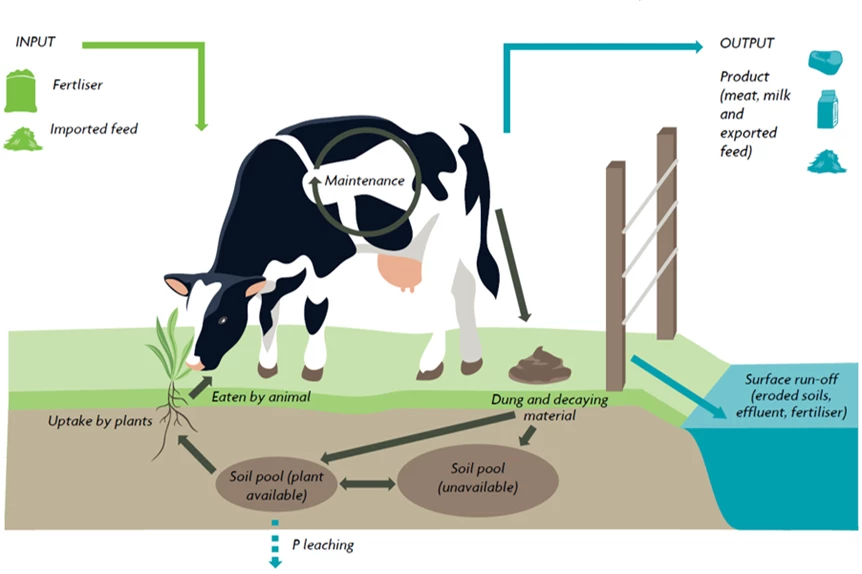Reducing phosphorus loss
1 min read
Phosphorus (P) is essential for plant and animal growth but can harm the environment if managed improperly. Good farming practices have been developed to help minimise P loss and optimise farm productivity.
Phosphorus is a chemical element used by plants and animals for growth. It is found naturally as rock phosphate in sedimentary and igneous rock. Because it is bound tightly to mineral components in the soil, only a fraction of phosphorus is available for plant uptake.
Phosphorus typically enters a dairy farm system via purchased feed and phosphate fertiliser (phosphate is the form of phosphorus that can be taken up by plants).
Of the phosphate eaten by the cow in grass or supplement, approximately 30 percent will leave the farm in products such as milk and meat. The remainder will be excreted by the cow as dung.
Phosphorus behaves very differently to nitrogen. It binds with soil and only dissolves slowly in water over time. Although it doesn’t readily leach into groundwater, it can still pollute waterways via critical source areas, erosion, runoff, and direct deposition of dung.
The diagram below shows a simplified on-farm phosphorus cycle.

There are three ways that phosphorus is lost from dairy land to water:
The loss of phosphorus to water from dairy-grazed crops, pasture systems and catchments can vary widely, from 0.5 to 4.2 kg/ha/yr.
Excess phosphorus causes growth of plants in waterways, lakes and estuaries and leads to eutrophication. This can cause algal blooms, rapid weed growth and oxygen depletion, which are detrimental to freshwater ecosystems. Toxic blue-green cyanobacterial blooms can also cause human health issues.
There are five areas of your farming operation to consider when taking action to reduce phosphorus loss: